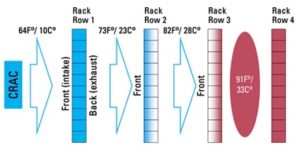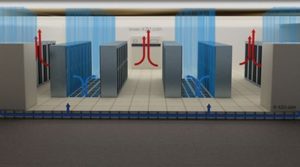Energetic efficiency

Hey folks! How you doing?
In today’s post, we are going to talk about another interesting topic and a very important thing to take into account while we are designing a data center, the energetic efficiency. When a company wants to invest in a data center, it knows that it will be a huge amount of money to invest at the very beginning. Nevertheless, what happens when the data center is set up? Then is time to maintain this entire infrastructure and therefore, is time to spend much more money. Luckily, if the data center it has been well designed, the amount of money will decrease, rather than increase. This is possible using a good energetic efficiency plan.
What does this plan gather?
It has three different points and depending how are they done, more money is saved. Now it is time to introduce them:
- Hot Aisle/Cold Aisle Layout: Most modern IT equipment takes in cold air via the front of the unit and exhausts hot air out of the back of the unit. If servers are placed in rows (like the image below) with the front of the racks (and servers) all facing the same direction, then all the air will go in the same direction. If several parallel rows of racks are placed with the same orientation, a significant efficiency problem will happen. The hot exhaust air from the first row of racks will be get sucked into the "cool" air intakes of the second row of racks. With each progressive row, the air temperature increases as hot air is moved from one row of servers to the next.

As you can see, the last row will have some temperature problems, as well as the fans will be working in a full speed due to this hot temperature coming from the other rows. Consequently, the data center will do more power consumption and the last row of servers will have in a near future some problems because of the heat. These problems might decrease performance, increase the noise due to the full fans speed and so on. A good solution is put the rows of server racks oriented so that the fronts of the servers face each other. In addition, the backs of the server racks should also face each other. This orientation creates alternating "hot aisle/cold aisle" rows. Such a layout, if properly organized, greatly reduces energy losses and also prolongs the life of the servers
- Containment/Enclosures: refers to the various physical barriers used in addition to a hot aisle/cold aisle arrangement that further eliminate the mixing of cold ("supply") air and hot exhaust air. Containment structures lead to higher allowable temperatures in data centers. Higher temperatures save energy because fan speeds can be lowered. As an example, we provide some photos, as you could be more familiar with this idea and also clear the idea.
- Variable Speed Fan Drives: unit fans consume a lot of power and tend to account for 5% to 10% of a data center's total energy use. (Typically, only cooling compressors use more energy in a data center.) Most of these units are unable vary their fan speeds with the data center server load, which tends to fluctuate. Because data center environments constantly change, variable-speed fan drives should be used wherever possible. This will help on decreasing the final receipt.
Taking into account this plan, as well as deploying properly all the devices over the place, will help to decrease the power consumption and increase the energetic efficiency of the data center. Some aspects like CAPEX and OPEX will not increase. These two features are very important because they are the main expenses for a company. The more the company could decrease CAPEX and OPEX, the more will save and more benefits will take from the datacenter.

Add new comment